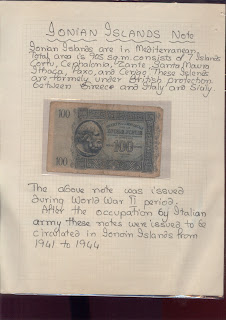


History of Banking in India
India has been one of the earliest issuers of coins in the world (6th Century BC). The origin of the word "rupee" is found in the word rup or rupa, which means "silver" in many Indo-Aryan languages such as Hindi. The Sanskrit word rupyakam means coin of silver. The derivative word Rupaya was used to denote the coin introduced by Sher Shah Suri during his reign from 1540 to 1545 CE. The original Rupaya was a silver coin weighing 175 grains troy (about 11.34 grams) [1]. The coin has been used since then, even during the times of British India. Formerly the rupee was divided into 16 annas, 64 paise, or 192 pies. Decimalisation occurred in Ceylon (Sri Lanka) in 1869,
A huge divide between silver-based and gold-based economies resulted. The worst affected were economies with silver standard that traded mainly with economies with gold standard. With discovery of more and more silver reserves, those currencies based on gold continued to rise in value and those based on silver were declining due to demonetization of silver. For India which carried out most of its trade with gold based nations, especially Britain, the impact of this shift was profound. As the price of silver continued to fall, so too did the exchange value of the rupee, when measured against pound sterling.
Without a sound and effective banking system in India it cannot have a healthy economy. The banking system of India should not only be hassle free but it should be able to meet new challenges posed by the technology and any other external and internal factors.
For the past three decades India's banking system has several outstanding achievements to its credit. The most striking is its extensive reach. It is no longer confined to only metropolitans or cosmopolitans in India. In fact, Indian banking system has reached even to the remote corners of the country. This is one of the main reasons of India's growth process.
The government's regular policy for Indian bank since 1969 has paid rich dividends with the nationalisation of 14 major private banks of India.
Not long ago, an account holder had to wait for hours at the bank counters for getting a draft or for withdrawing his own money. Today, he has a choice. Gone are days when the most efficient bank transferred money from one branch to other in two days. Now it is simple as instant messaging or dial a pizza. Money have become the order of the day.
The first bank in India, though conservative, was established in 1786. From 1786 till today, the journey of Indian Banking System can be segregated into three distinct phases. They are as mentioned below:
• Early phase from 1786 to 1969 of Indian Banks
The East India Company established Bank of Bengal (1819), Bank of Bombay (1844) and Bank of Madras (1845) as independent units and called it Presidency Banks. These three banks were amalgamated in 1920 and Imperial Bank of India was established which started as private shareholders banks, mostly Europeans shareholders.
In 1869 Allahabad Bank was established and first time exclusively by Indians, Punjab National Bank Ltd. was set up in 1894 with headquarters at Lahore. Between 1906 and 1913, Bank of India, Central Bank of India, Bank of Baroda, Canara Bank, Indian Bank, and Bank of Mysore were set up. Reserve Bank of India came in 1935.
The site for bank was carefully selected, being protected by the Hooghly River on the west, a creek to the north, and by salt lakes about two and a half miles to the east. There were three large villages along the east bank of the river Ganges, named, Sutanuti, Gobindapur and Kalikata. These three villages were bought by the British from local land lords. The Mughal emperor granted East India Company freedom of trade in return for a yearly payment of 3,000 rupees.
Kolkata was just a village before the British came to India; the capital city of Bengal was Murshidabad, around 60 miles north of Kolkata. In 1756, Siraj-ud-daullah, Nawab of Bengal, attacked the city and captured the fort. Kolkata was recaptured in 1757 by Robert Clive when the British defeated Siraj-ud-daullah on the battle field of Plassey. In 1772, Kolkata became the capital of British India, and the first Governor General Warren Hastings moved all important offices from Murshidabad to Kolkata. Till 1912, Kolkata was the capital of India, when the British moved the capital city to Delhi. In 1947, When India gained freedom and the country got partitioned between India and Pakistan, Kolkata became the capital city of the state of West Bengal.









































